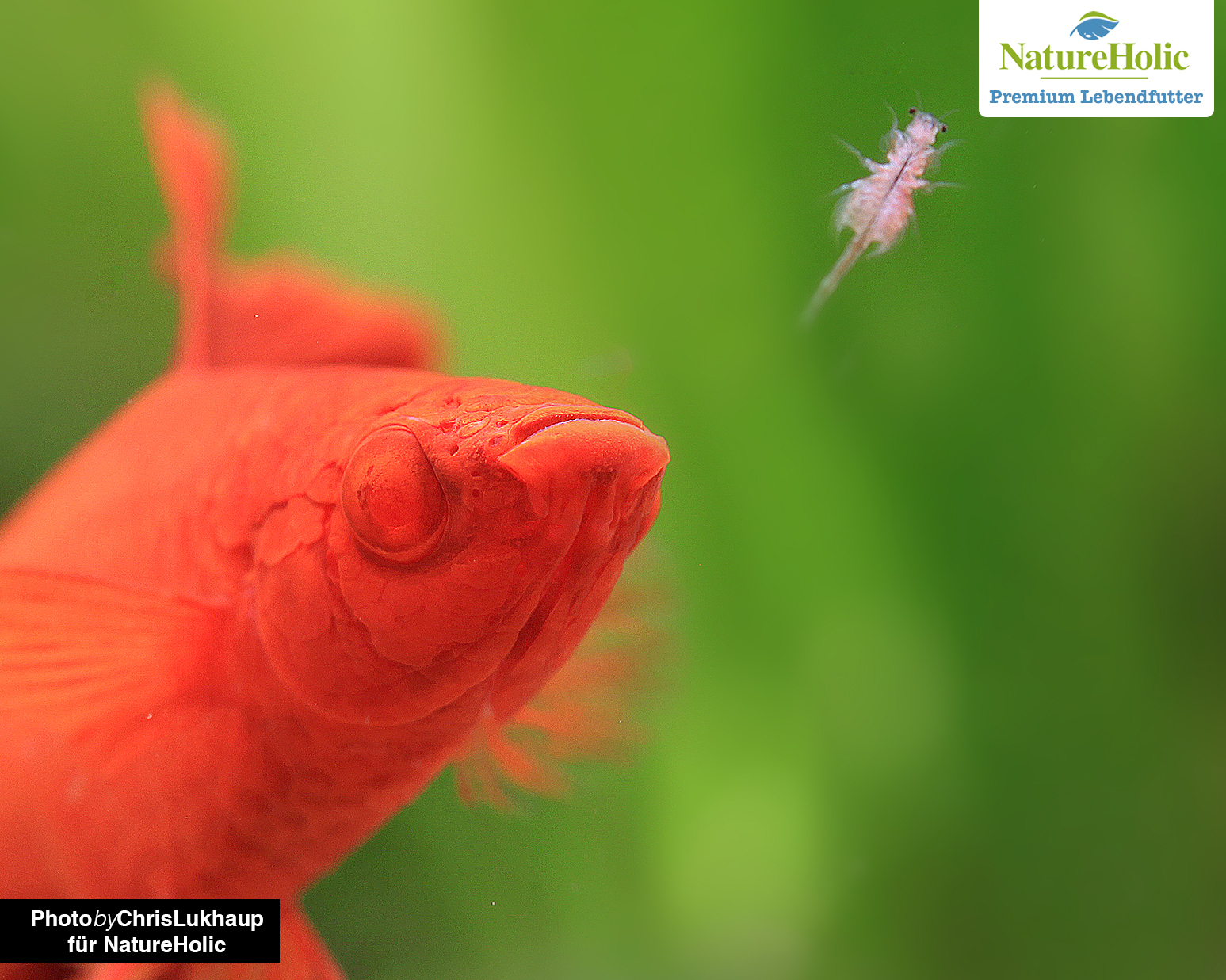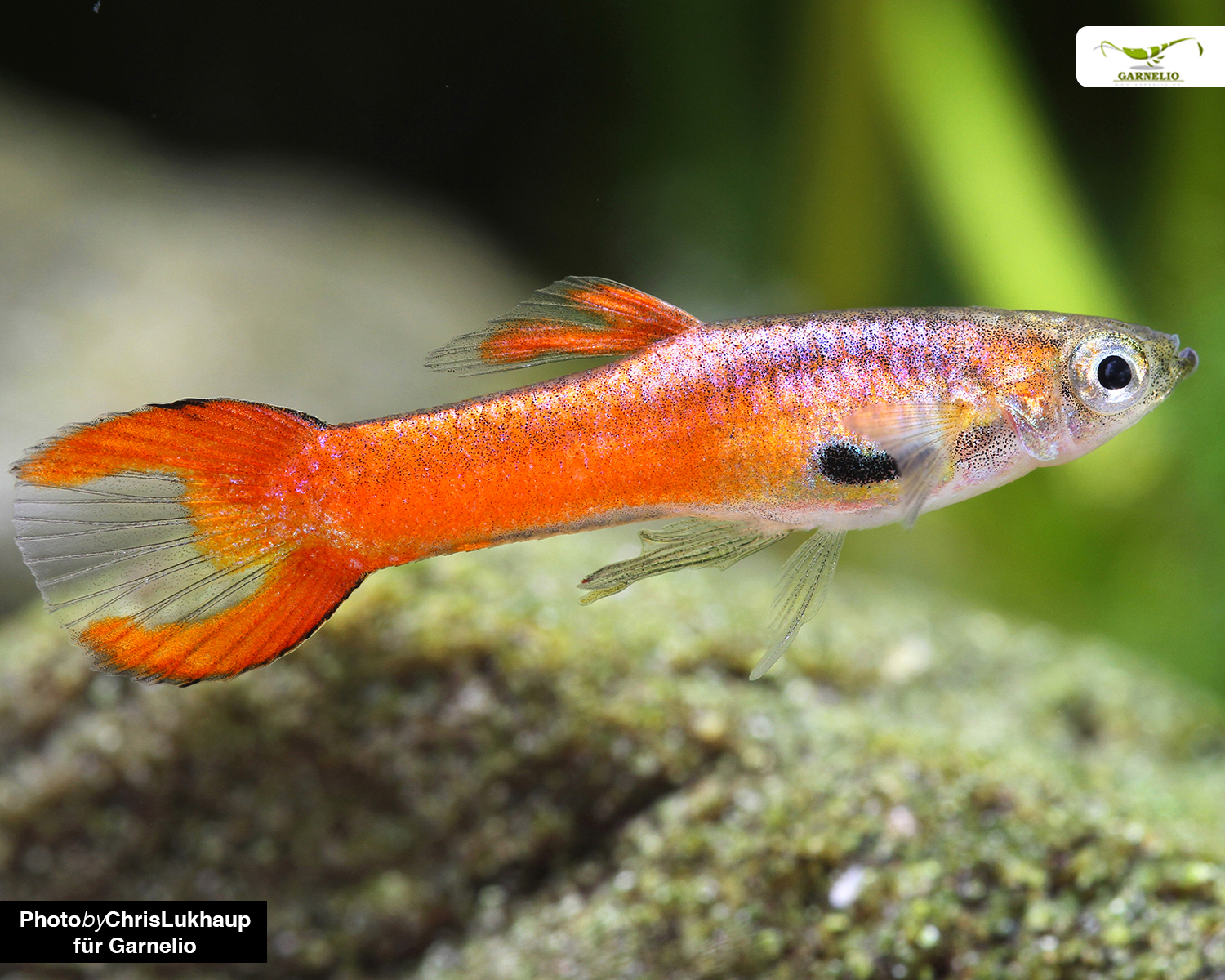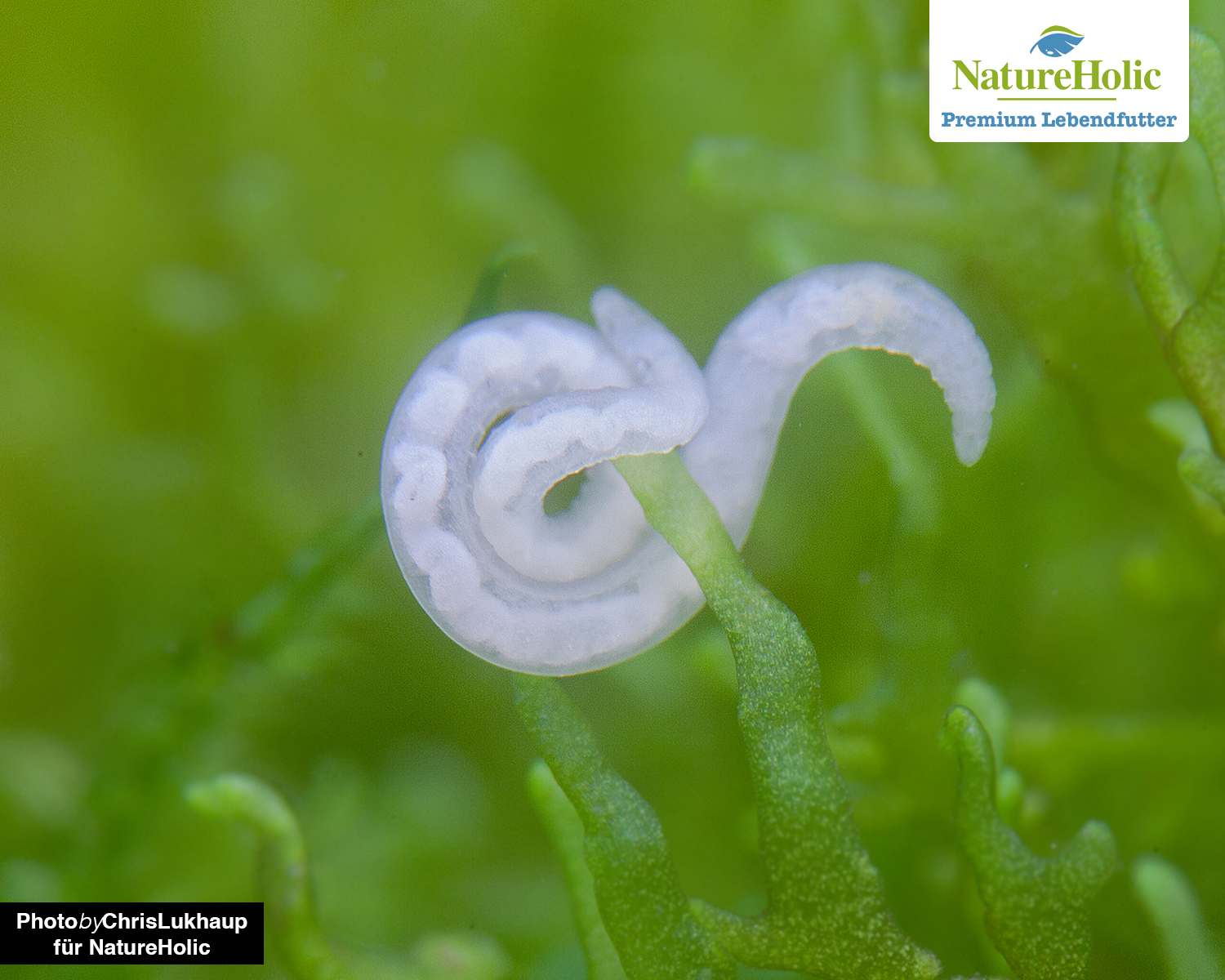Live food for fish and invertebrates in the aquarium // Part 1
Live food is valuable in the aquarium - for feeding as nature intended for fish and also for invertebrates, the small food animals are indispensable. They also give aquarium animals the opportunity to work out their food, which is an undeniable advantage and a nice change in aquarium life.
We don't really need to discuss the sense and benefit of live food in the aquarium. Not only does live food come extremely close to the natural food spectrum of fish and freshwater invertebrates, but it also provides a welcome change. Here, especially the fish have to "work" for the food a bit more than with the usual flakes, tabs or granulated foods. Live food brings variety and also a bit of excitement into the lives of the aquarium inhabitants, and with few exceptions you can't go wrong with natural food if you've fed a bit too much - uneaten live food simply lives on. In the worst case, some mosquito larvae develop into mosquitoes, but that's all that really happens, and at least it has no negative effect on water quality.
Who likes live food?
The vast majority of aquarium fish are obvious consumers of live food. For example, guppies, platies, neons and other tetras, as well as danios and gouramis, are typical omnivores that like to take live food as a supplement to their usual diet. Fighting fish and many cichlids are even pure carnivores, which get sick from mixed food with a high vegetable content. But also crayfish, large-armed shr imps and crabs like to hunt natural food, and even dwarf shrimps and some snail species like apple snails do not say no to some kinds of live food.
Catching live food yourself
Some live food can be caught in the wild - the classic way is to catch black mosquito larvae in the rain barrel in the garden. If you go pond fishing, you need a permit, depending on the state. Please find out which regulations apply in your area before you start pond fishing - information is usually available from the local nature conservation authority or the fisheries office.
Alternative to ponding
If you do not have the possibility to pond your fish or if you are afraid of introducing unpleasant guests such as dragonfly larvae or fish lice into the aquarium, you can alternatively buy bags with live food for aquarium inhabitants in the pet store or here in the store. The bags with the live natural food are stored gently in a cool place until delivery. This way the metabolism of the small food animals shuts down and they do not pollute the water in the bag. To assess whether the live food is still suitable, you should look critically into the bag, especially in pet shops where the live food is not stored in a cool place. If at least about 80-90% of the inhabitants are still alive, the live food can be fed in the aquarium.

Storing live food
If you do not want to feed the complete delivery at once, you can simply store intact bags, in which there are no or only very few dead food animals, in the refrigerator until you can feed them. If the portion in the bag is too large for one ration, pour the water including live food into a larger bowl, fill up with appropriate water (freshwater or saltwater) and store this bowl loosely covered in the refrigerator. The food animals are then removed with a fine landing net.
Which live food is suitable for daily feeding?
Worms such as enchytraea, Walter worms, banana worms, micro worms or Tubifex contain proportionally quite a lot of fat and are therefore not suitable for every day. Small crustaceans such as Artemia (brine shrimp) or Cyclops (hopworms) and Daphnia (water fleas), on the other hand, are quite high in fiber and can contribute to healthy digestion. They also contain vital chitin for crustaceans such as dwarf shrimp, large-armed shrimp, crayfish, dwarf crabs and, of course, aquatic and terrestrial crabs.
Insect larvae such as black, white and red mosquito larvae, in forum jargon often abbreviated as Mülas, are also a valuable live food for every day.
Finest live food like slipper fish or rotifers are perfect for breeding very small fish larvae, for which even artemia euplii would still be too big.
Is it possible to breed live food?
By its very nature, live food breeding only works for species that spend their entire life in the water. Black mosquito larvae are the larvae of mosquitoes, white mosquito larvae become tufted mosquitoes and red mosquito larvae become twitching mosquitoes. Continued breeding in the home is not advisable with any of these mosquitoes - they bite or at least can become quite troublesome.
Other live food species like Cyclops or Artemia are quite difficult to cultivate in larger masses, but with some patience you can manage to get an extensively running batch. However, when it comes to live food, there are also candidates such as water fleas, moina or various worms such as shiner worms, enchytraea, grindal and others that are extremely easy to grow on with little effort.
Backup
It is optimal to maintain at least two approaches of each live food culture - one in which you are extensive, feeding little so that the population increases only slightly, and one in which you feed intensively to harvest as many food animals as possible. Intensive cultures can tip over from time to time, and then the animals die. If you still maintain an extensive approach, you can divide it and create an intensive culture again with one half. In the beginning, however, you should feed the crop with caution, because the forage animals are only a few and have to multiply before they can cope with larger amounts of food.
In the following blogs, we will go into more detail about the individual types of live food, their value for the aquarium inhabitants and their cultivability - some live food can be further bred so that your aquarium inhabitants always have fresh, high-quality food available.


